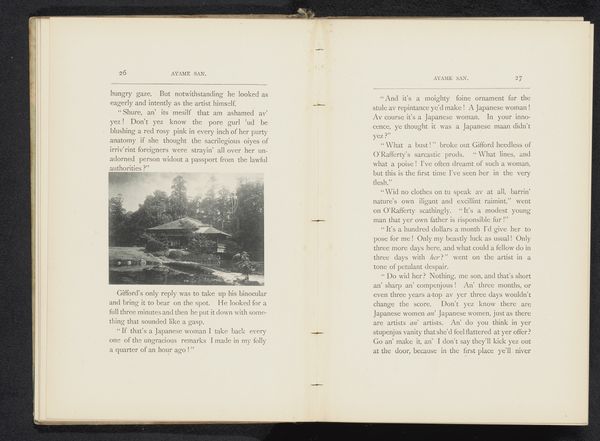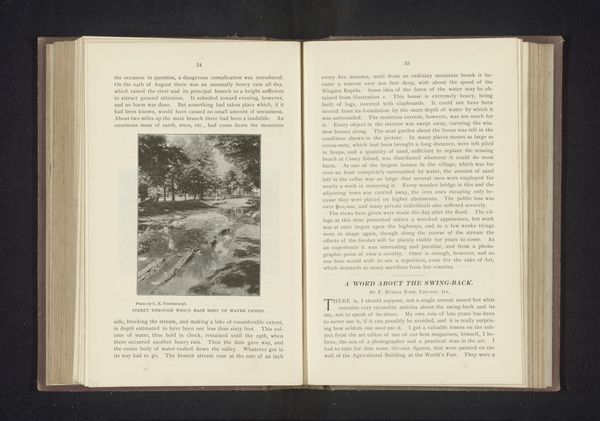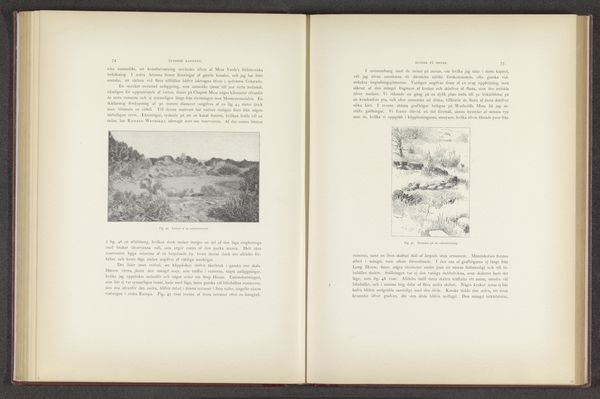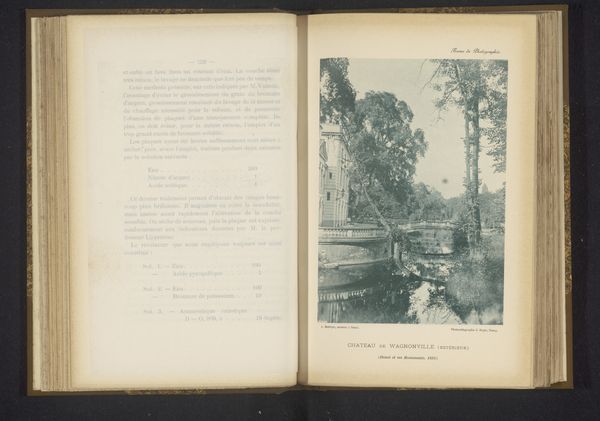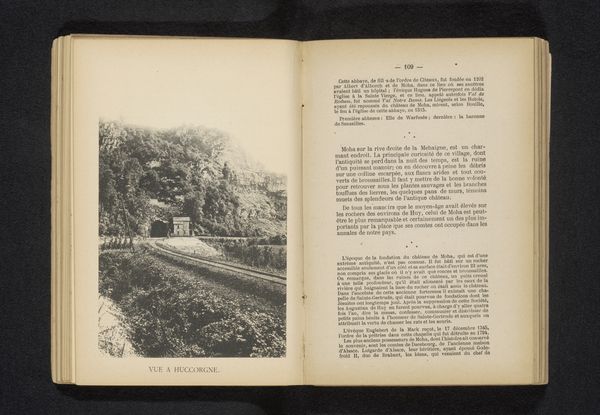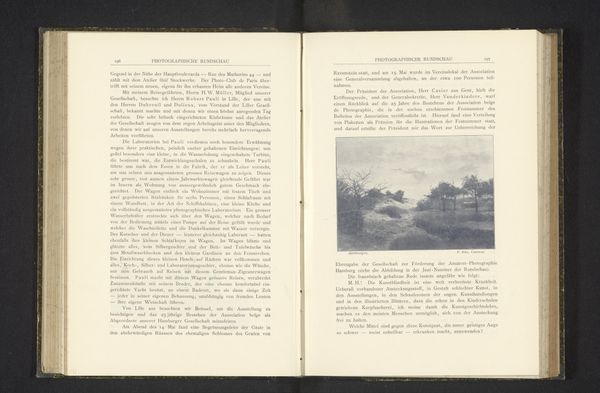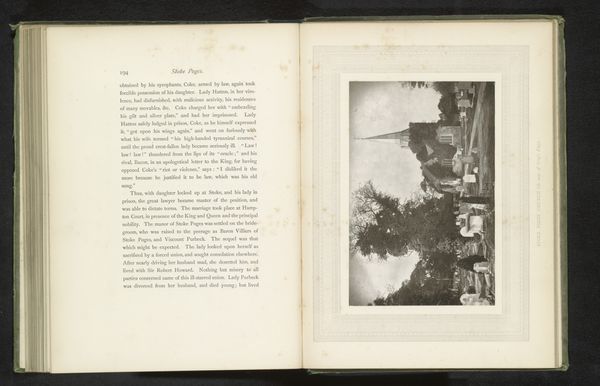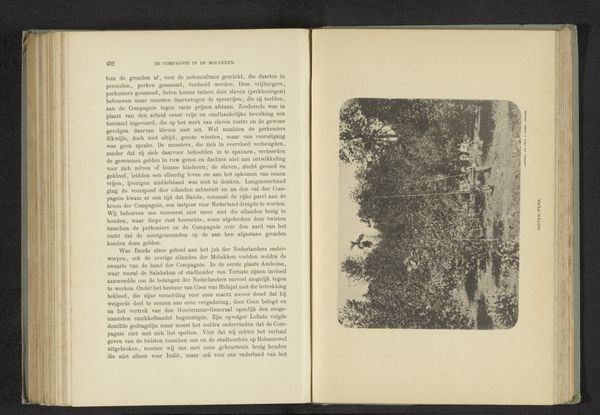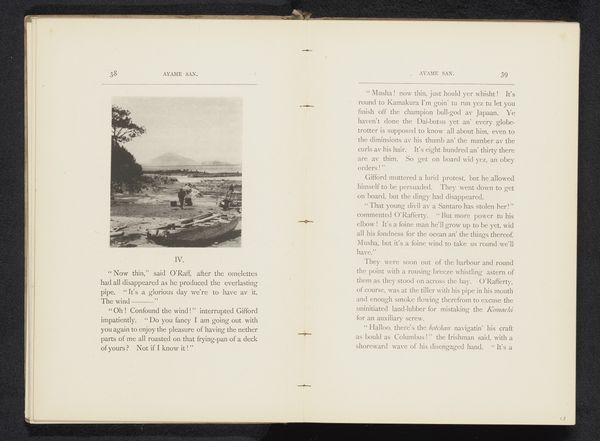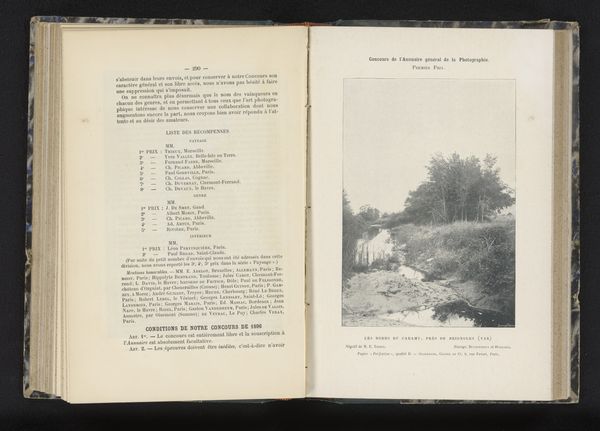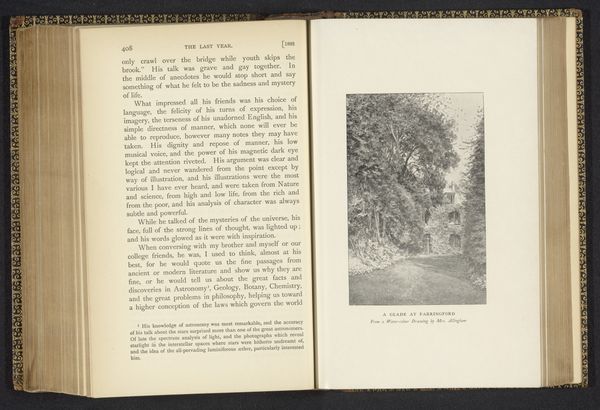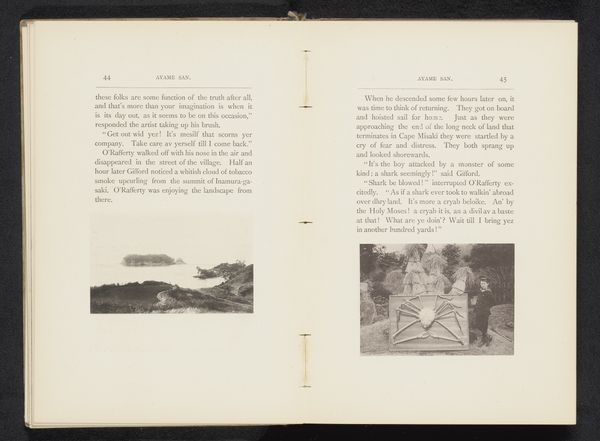
photography
#
landscape
#
photography
Dimensions: height 56 mm, width 86 mm
Copyright: Rijks Museum: Open Domain
Curator: So, here we have “Gezicht op een meer te Japan,” or “View of a Lake in Japan,” a photographic print made before 1892 by William Kinnimond Burton. What strikes you initially? Editor: It’s like peering into a hushed secret, isn’t it? All silvery greys and the quiet suggestion of a breeze…it's melancholic. And the stark printing within the book gives it the air of found discovery, adding layers of feeling and intrigue to this subtle landscape. Curator: Absolutely. And knowing Burton’s background—trained as an engineer but finding photography later—makes you think about the means of production and about his technical experimentation, in line with Japan's rapid industrialisation and the introduction of photography there. Also, it connects with Japonisme in Europe – the import and adaptation of Japanese styles. Editor: Indeed. The composition leads me to wonder what the making of it was like. It feels intuitive and less contrived than, say, a posed studio portrait of that period. Like, did he choose to use his bulky gear right at this spot to capture it so organically? What did he felt as the landscape became part of this tangible thing, the print? I like to wonder! Curator: It’s intriguing to consider. And given the context, Ukiyo-e prints had been circulating in Europe for decades prior, and Burton was actively engaging with this style, translating those flat planes and considered compositions into his photographic vision, merging modern technology with the themes that informed older aesthetic languages. It becomes part of larger flow and exchange. Editor: Exactly, it also gives us an understanding on the culture surrounding material circulation, production, and reception during the peak era of Japonisme. Thinking beyond individual artistry to think what’s around it always makes things feel a lot more tangible! Curator: A wonderful thought. So we step away with that deeper understanding of how images of Japan and a specific approach to making impacted culture during a key time. Editor: For sure!
Comments
No comments
Be the first to comment and join the conversation on the ultimate creative platform.
